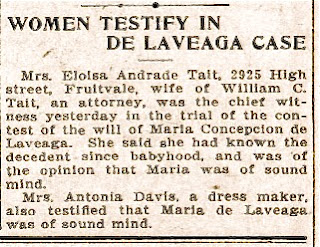"Who are THESE little boys?", we ask.
Stella and I are sitting in our long, lost cousin Patrick's Killeen's living room in Pacifica. It is a special day, our first visit with him in decades. The sisters are on a mission to recover our ancestors, living and dead. We are rooting Patrick's pile of inherited famiiy photos. "I have NO idea", he replies.
"#@!!?? NO IDEA?", we plead .
No caption on the backside. No notes.... Still there are clues. These little boys are definitely Latino so that limits them to the Maltos side of Patrick’s family, his other side is clearly Irish.
Stella and I are sitting in our long, lost cousin Patrick's Killeen's living room in Pacifica. It is a special day, our first visit with him in decades. The sisters are on a mission to recover our ancestors, living and dead. We are rooting Patrick's pile of inherited famiiy photos. "I have NO idea", he replies.
"#@!!?? NO IDEA?", we plead .
No caption on the backside. No notes.... Still there are clues. These little boys are definitely Latino so that limits them to the Maltos side of Patrick’s family, his other side is clearly Irish.
What else do we know for sure?
* Patrick's family photos were passed down from his grand aunt, Emma Maltos, to his mother Leona Novak then to Patrick. It’s highly likely that these Latino boys in Patrick’s photo box are kids from the Maltos side of the family.
* The entire box of photos are family. This collection contains no random collector photos. All the memorabilia is restricted to relatives and their travels.
* Patrick's family photos were passed down from his grand aunt, Emma Maltos, to his mother Leona Novak then to Patrick. It’s highly likely that these Latino boys in Patrick’s photo box are kids from the Maltos side of the family.
* The entire box of photos are family. This collection contains no random collector photos. All the memorabilia is restricted to relatives and their travels.
*One of them
bears resemblance to slanty eyes of grandpa Juan Maltos.
* It appears that these boys are ages
about three and five.
* Juan Jack Maltos
was born in 1869 his brother Antonio Maltos was born in 1871 (following this
line of thought would date the picture about 1874...
* Flip the photo and the back shows the
photographer is Jacob Shew at 513 Montgomery in San Francisco.
* More photo research tells us Jacob Shew made his
reputation making portraits. He left his mark in San Francisco in the later
half of the 19th century.
 |
Source: Pioneer Photographers of the Far West: A Biographical Dictionary, 1840-1865By Peter E. Palmquist, Thomas R. Kailbourn, Page 494. |
* Grandma Abata Maltos San Francisco North Beach household
was within walking distance to the studio. Not a far jaunt, even for little boys.
We imagine a story like this: Perhaps young Juan and his brother Antonio were
visiting Grandma Abata Maltos in San Francisco and they had their picture taken
in the studio on Montgomery Street. We can see a lot of
care when into those little boy's small suits. Aunt Antonia (who was also godmother to Antonio and present at his baptism in San Jose) was a seamstress. It’s easy to imagine she and Abata made those little suits. Some things we know for sure. Some things are a guess... and we imagine the rest.
Linda Allison July 2015



